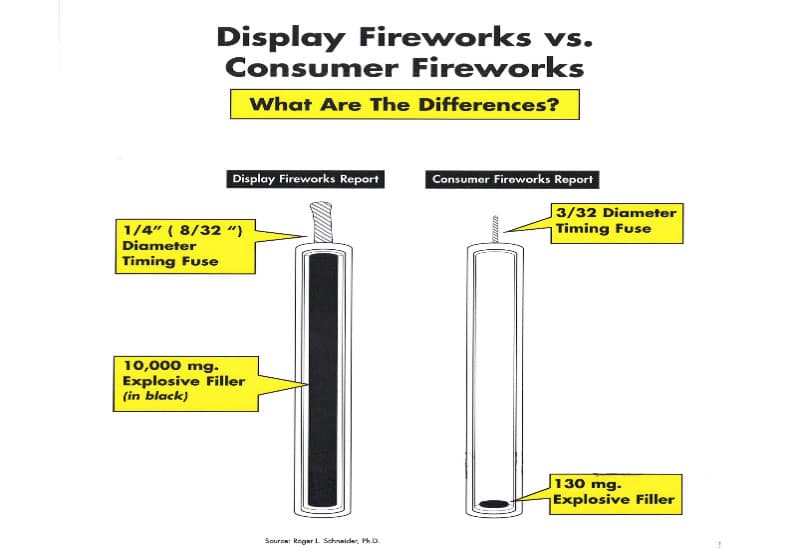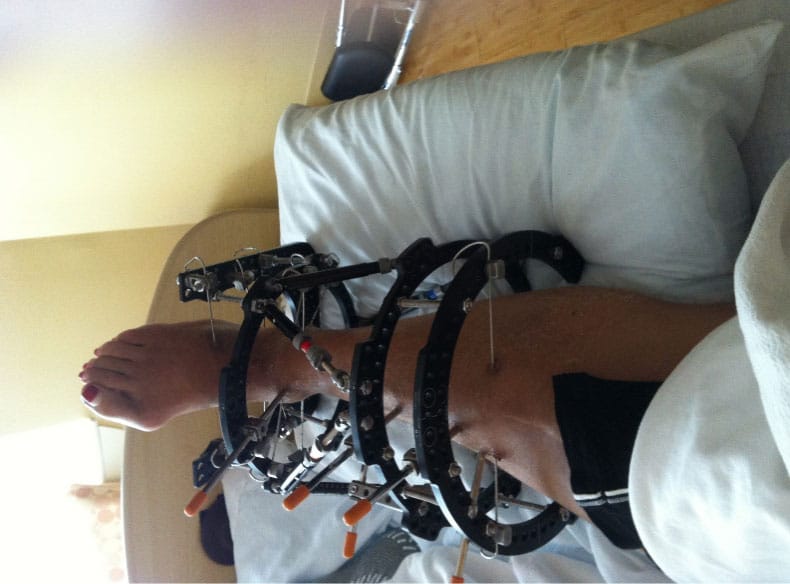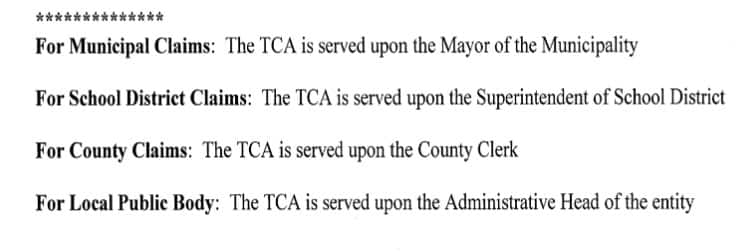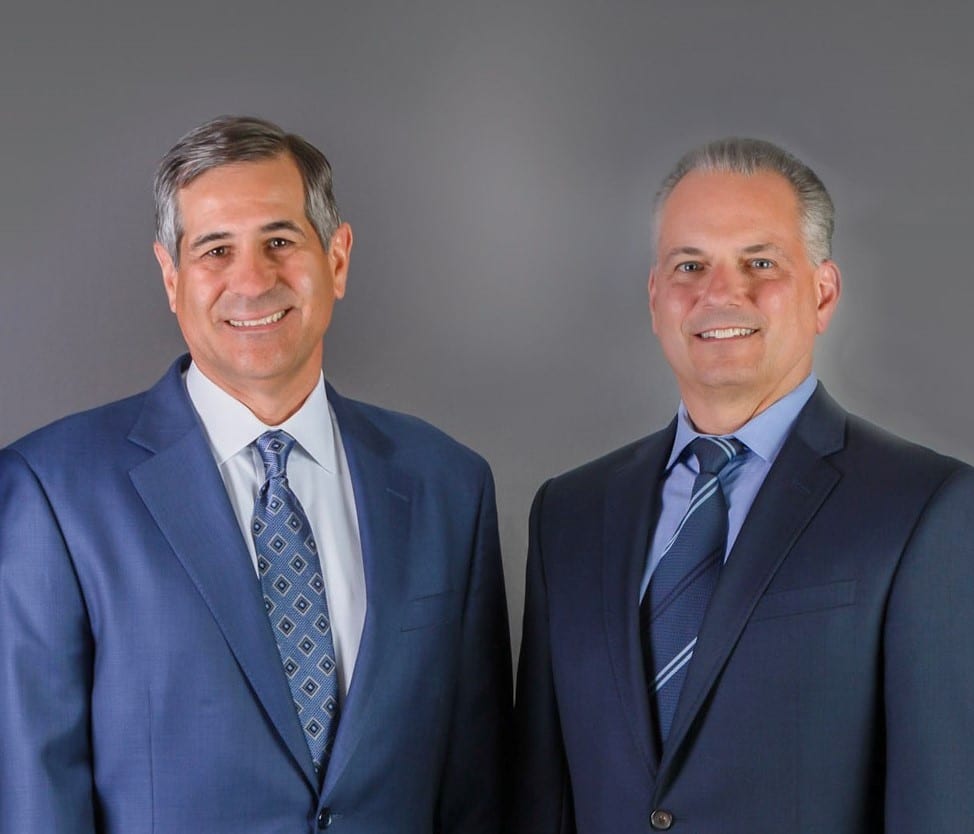Bringing Title 59 Claims
Read more about the liability of Local and State Governments and evaluation of Title 59 Tort Claims.
- Presented by: Louis J. DeVoto, Esquire- Certified Civil Trial Attorney Past President, Trial Attorneys of NJ
- Presented for ICLE- New Jersey Law Center, New Brunswick, NJ October 29, 2015
Chapter 1:
Legislative declaration, definitions and various provisions defining the scope of the Act.
Chapter 2:
Applies to public entities and establishes a presumption of immunity (including discretionary) unless liability is expressly allowed in the Act.
Chapter 3:
Applies to public employees and establishes a presumption of liability unless there is immunity.
Chapter 4: Dangerous Conditions
Covers liability and immunity of the public entity for conditions of public property.
Chapter 5:
Immunizes certain police and correction activities.
Chapter 6:
Immunizes certain medical, hospital, and public health activities.
Chapter 7:
Contains rarely used immunities relative to the administration of tax laws and Chapter 7A immunizes activities relative to community service.
Chapter 8:
- Firstly, Filing the Notice of Tort Claim
- Secondly, Statute of Limitations
Chapter 9:
Defines parameters for conditions of suit and judgment including:
- Firstly, Damages Limitations;
- Secondly, No Subrogation;
- Lastly, no Collateral Source.
Chapter 10:
Requires State to indemnify a public employee and governs the Attorney General’s obligations to defend a State employee.
Chapter 11:
Establishes the authority of the State of New Jersey to settle claims.
Chapter 12:
Established the Tort Claims Fund and the Treasurer’s authority to pay claims.
Chapter 13:
Defines the Contractual Liability Action.
Most Commonly Brought Claims Under TCA
- Firstly, vehicular crashes (that are not police chases);
- Secondly, Dangerous Conditions of Public Property;
– Negligent Maintenance (as opposed to design); - Then, Negligent Supervision – once undertaken;
- Also, Negligence of public employees doing ministerial tasks (avoids discretionary acts);
- Lastly, Medical Malpractice (UMDNJ/RWJ);
Title 59:4-2- Dangerous Conditions of Property
- Property was in dangerous condition at time of injury;
- Injury proximately caused by dangerous condition;
- Dangerous conditions created reasonably foreseeable risk of the injury that was incurred
- And , either:
– Condition was created by negligent acts of employee; or
– Public entity had actual or constructive notice of condition; - Conduct of public entity was palpably unreasonable
Definitions
• “Dangerous condition” means a condition of property that creates a substantial risk of injury when such property is used with due care in a manner in which it is reasonably foreseeable that it will be used.
• Public property” means real or personal property owned or controlled by the public entity,
Case Law- Dangerous Condition
- The trial judge must make the preliminary determination as to whether the alleged condition is in fact a dangerous one.
Speziale v. Newark Hous. Auth., 193 N.J. Super. 413, 416 (App. Div. 1984).
Case Law- Dangerous Condition
- Where an employees’ negligence creates the dangerous condition, the plaintiff must proceed on a dangerous condition theory rather than the general negligence and vicarious liability provisions of the TCA.
Case Law- Due Care
- “Used with due care” implies a standard of objective reasonableness from a community perspective. Garrison v. Township of Middleton, 154 N.J. 282, 287 (1998).
- Also, it presupposes some uniform standard of behavior with regard to persons using the property properly and does not refer to the actual activities of the plaintiff or others. Daniel v. State, Dep’t of Transp., 239 N.J. Super. 563, 587 (App. Div.), certif. denied, 122 N.J. 325 (1990).
Case Law- Palpably Unreasonable
- The TCA does not define “palpably unreasonable”.
- The term has been defined by case law to mean “behavior that is patently unacceptable under any given circumstance.” Kolitch v. Lindedahl, 100 N.J. 485, 493 (1985).
- It has also been defined to mean that the “public entity acted or failed to act under circumstances which would make it manifest and obvious that no prudent person would approve of its course of action or inaction.” Furey v. County of Ocean, 273 N.J. Super. 300, 312-13 (App. Div.) certif. denied, 138 N.J. 272 (1994).
Case Law- Palpably Unreasonable
• Whether a public entity’s actions or inactions were palpably unreasonable is a jury question, except in cases where reasonable persons could not differ.
Vincitore v. N.J. Sports & Exposition Auth., 169 N.J. 119 130 (2001); Polyard v. Terry, 148 N.J. Super. 202, 218 (Law Div. 19770, rev’d on other grounds, 160 N.J. Super. 497 (App. Div. 1978).
Practice Pointers
- Firstly, the key to Dangerous conditions is –“negligent maintenance” (avoids plan and design, weather immunity and discretionary acts immunity)
- Secondly, negligent maintenance of sidewalks;
- Thirdly, inadequate lighting;
- Next, negligent maintenance of roadways/shoulders;
- Or, negligent maintenance of property or stop signs;
- Then, negligent construction/installation;
- Lastly, negligent inspection that results in dangerous condition can also be brought to avoid immunity.
Title 59:2-2 – Liability of Public Entity
a. A public entity is liable for injury proximately caused by an act or omission of a public employee within the scope of his employment in the same manner and to the same extent as a private individual under like circumstances. ***(if no immunity applies)
Examples: MVA crashes, Lack of Supervision, Medical Malpractice
Title 59:3-1 – Liability of Public Employee
a. Except as otherwise provided by this act, a public employee is liable for injury caused by his act or omission to the same extent as a private person.
This is subject to any immunity for the public employee and any immunity for the public entity.
Examples: MVA crashes, DYFS, Medical Malpractice, and other “ministerial acts” required to be performed
Negligent Supervision- Case Law
• Negligent supervision– liability attaches for negligent supervision once a public entity or employee undertakes to provide supervision. Claimant must prove that the injury occurred at a public place, that the entity or employee undertook to provide supervision and that they were negligent in doing so. Fleuhr v. City of Cape May, 303 N.J. Super. 481 (App. Div. 1997); Law v. Newark Bd. of Ed., 175 N.J. Super. 26, 32 (App. Div. 1980).
Title 59:4-4 – Failure to Provide Emergency Warning Signals
• Subject to section 59:4-2 of this act, a public entity shall be liable for injury proximately caused by its failure to provide emergency signals, signs, markings or other devices if such devices were necessary to warn of a dangerous condition which endangered the safe movement of traffic and which would not be reasonably apparent to, and would not have been anticipated by, a person exercising due care.
Title 59:4-6 Plan or design immunity
Neither the public entity nor a public employee is liable under this chapter for an injury caused by the plan or design of public property, either in its original construction or any improvement thereto, where such plan or design has been approved in advance of the construction or improvement by the Legislature or the governing body of a public entity or some other body or a public employee exercising discretionary authority to give such approval or where such plan or design is prepared in conformity with standards previously so approved.
Title 59:4-6 – Case Law
• In order to prevail on planning and design immunity, the public entity must show that the alleged defect was part of an original plan/design of the public entity that was approved by an official body and that this specific feature was contained within that plan/design. Once implicated, the immunity cannot be lost. See, Thompson v. Newark Housing Auth., 536-537; Luczak v. Township of Evesham, 311 N.J. Super. 103, 108-109 (App. Div.) certif. den. 156 N.J. 407 (1998). Negligent construction, not in conformance with approved standards, is not immunized. See Birchwood v. Lakes Colony Club v. Medford Lakes, 179 N.J. Super. 409 (App. Div. 1981), mod. 90 N.J. 582, 599 (1982).
Damages- Chapter 9
59:9-2. Judgments, interest, limitations.
d. No damages shall be awarded against a public entity or public employee for pain and suffering resulting from any injury; UNLESS
• Permanent loss of a bodily function; or
• Permanent disfigurement; or
• Dismemberment, and
• where the medical treatment expenses are in excess of $3,600.00.
Damages – Case Law
In fact, a plaintiff must prove:
(1) a permanent injury demonstrated by objective, medical evidence; and
(2) a loss of function that is substantial and a medical opinion linking the loss of function to the objectively demonstrated injury.
Brooks v. Odom, 150 N.J. 395 (1997).
Gilhooley v. County of Union, 164 N.J. 533 (2000)- Fractured patella with surgery and hardware (pins and wires) held to be a permanent loss of function of the leg even though plaintiff returned to full function with the reconstructed knee because the knee only returned to function with artificial aids.
Kahrar v. Borough of Wallington, 171 N.J. 3 (2002)- severe rotator cuff tear in a slip and fall found to be a permanent loss of bodily function where it required extensive reconstructive surgery and loss of 40% in function that improved greatly over time but nonetheless not back to normal.
Notice of Tort Claim- Chapter 8
- Firstly, you MUST serve a Public Entity with a Notice of Tort Claim within 90 Days of the accrual of cause of action;
- There is the potential to serve Notice after 90 days but within 1 year provided that there were extraordinary circumstances and no prejudice to public entity; OTSC
- However, if you don’t, YOU LOSE.
When Does a TCA Claim Accrue?
- General Rule: date of injury;
- Wrongful Death: date of death;
- Survival Action: date of injury;
- Infants/Incompetents: The running of time is expressly tolled for infants and incompetents. This tolling applies to both the Notice of Claim requirement and the Statute of Limitations. BUT non-derivative claims of parents ARE NOT tolled (emotional distress).
- Discovery Rule is applicable to the notice requirements either because the victim is unaware of injury or does not know that a third party is responsible for an injury.
What Goes in the Notice?
- • Firstly, Name and Address of Claimant;
- Secondly, post office address where claimant wants mail sent;
- Thirdly, date, place, and circumstances of occurrence;
- Next, general description of injury and damages known;
- Then, names of public entity and employees causing loss or injury;
- After that, the amount of loss claimed by claimant;
- Lastly, signed by Claimant or Attorney
Place for Presenting Claim
• For State of NJ–
– Attorney General or
– Department or Agency allegedly involved;
– See State form (Dept. of Treasury, Risk Mgmt).
Place for Presenting Title 59 Claim
• For Local Public Entities:
Presentation of Claim (How sent)
•Firstly, As to the State:
– Delivering it to the Attorney General, State Agency involved;
– Certified Mail;
•Secondly, As to Local Public Entity:
– Delivering it to the local public entity;
– Certified Mail;
• Thirdly, As to both, if it is actually received
After Filing the Notice
• A public entity’s supplemental form must be filed with a reasonable time, even if the original tort claim form was appropriately filed. Wood v. County of Burlington, 302 N.J. Super. 371, 378 (App. Div 1997).
• Mandatory six-month waiting period between the filing of the notice and the commencement of suit. Strauss v. Township of Holmdel, 312 N.J. Super. 610, 625-626, (Law Div. 1997);
Practice Pointers: Filing the Claim
- Determine when Cause of Action accrued- SOL;
- Then, Diary the 90 Days for TCA Notice;
- Then, investigate ALL potentially negligent public entities;
- After that, file the TCA timely and correctly;
- Although, if > 90 Days, Immediately file OTSC to permit late notice;
- Diary 6 Months waiting period to file complaint;
Practice Pointers: Filing the Claim
- Firstly, make sure you have Permanent Injuries;
- Secondly, verify you have a definitive liability provision without a trumping immunity;
- Then, file the Complaint and draft like you know the law; (specific provisions, no punitives, etc.)
- Lastly, do discovery to find the bad “palpably unreasonable” acts.
























